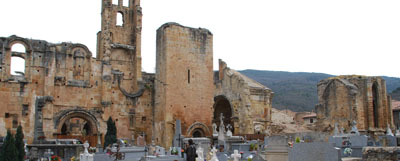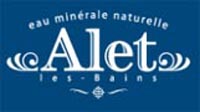The
Town

 Alet-les-Bains
is an attractive town in the Aude
département nesting to the east of the River
Aude. It lies on a relatively flat area, off the D118,
in the Aude valley surrounded by mountains. It calls itself
the gateway to the Haute Vallee de l'Aude (gateway to the
upper Aude valley). It is 33 km away from Carcassonne
to the north, an hour away from the Mediterranean
Sea to the east and another hour from the ski resorts
to the south west. Located in the Razés between Limoux
and Quillan, 26 km in the heart of the "Pays Cathare"
(Cathar Country).
Alet-les-Bains
is an attractive town in the Aude
département nesting to the east of the River
Aude. It lies on a relatively flat area, off the D118,
in the Aude valley surrounded by mountains. It calls itself
the gateway to the Haute Vallee de l'Aude (gateway to the
upper Aude valley). It is 33 km away from Carcassonne
to the north, an hour away from the Mediterranean
Sea to the east and another hour from the ski resorts
to the south west. Located in the Razés between Limoux
and Quillan, 26 km in the heart of the "Pays Cathare"
(Cathar Country).
Alet-les-Bains
was once a walled city with its own abbey - and later its own bishop and cathedral.
In 1197 the abbey and the town were fortified by ramparts and a moat. Now it is
little more than a village of just over 500 people but you can still see vestiges
of the city walls and ruined Cathedral. There is even a medieval Jewish ghetto.
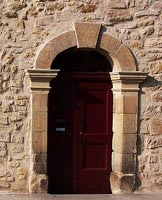
 There
are natural springs here and the water is bottled and sold
commercially. Alet has been renowned for its thermal waters
since Roman
times. A thermal centre and swimming pool are open in
the summer season.
There
are natural springs here and the water is bottled and sold
commercially. Alet has been renowned for its thermal waters
since Roman
times. A thermal centre and swimming pool are open in
the summer season.

 Alet's
centre is unusually well preserved and the ruins of the Cathedral are worth a
visit. There are numerous "belles demeures à colombages" - half
timbered houses. There is also medieval square featuring traditional medieval
houses, including the one where Nostradamus was believed to have lived. There
is a small restaurant in the square. You can also still see the ruins of the 12th
century cathedral, the 14th century Chapter House, the Episcopal Palace, the Medieval
town and many 12th and 14th century Colombage mansions.
Alet's
centre is unusually well preserved and the ruins of the Cathedral are worth a
visit. There are numerous "belles demeures à colombages" - half
timbered houses. There is also medieval square featuring traditional medieval
houses, including the one where Nostradamus was believed to have lived. There
is a small restaurant in the square. You can also still see the ruins of the 12th
century cathedral, the 14th century Chapter House, the Episcopal Palace, the Medieval
town and many 12th and 14th century Colombage mansions.
The name Alet is
not pronounced "Alay" as the unwary generally assume, but "Alette"
- apparently a remnant of its earlier name Aleth - the local valley is still called
the "val d'aleth".
The Abbey and Cathedral

 In
813, Alet was the seat of a Benedictine abbey founded by
Béra, Viscount of Razés. The Abbey was made
into an Episcopal see by Pope John XXII in 1317. The new
cathedral church was built next to the Abbey.
In
813, Alet was the seat of a Benedictine abbey founded by
Béra, Viscount of Razés. The Abbey was made
into an Episcopal see by Pope John XXII in 1317. The new
cathedral church was built next to the Abbey.
The cathedral choir was sold by the last bishop
of Alet, Charles de la Cropte de Chanterac, in 1776, a few
year before he was deposed during the French Revolution.
The choir was then demolished to allow the road to be widened
(this road, Alet-les-Bains' main street, is now named after
Nicolas Pavillon.) The Cathedral itself continued as a Cathedral
church until it's dissolution on 29 November 1801 when the
Diocese of Alet was absorbed back into the Diocese of Carcassonne
Click on the following
link for more on the
Abbey and Cathedral at Alet-les-Bains 
The
Evêché
The old Episcopal Palace survives - it is called the
Evêché ("Bishopric"), now the Hostellerie de l'Evêché.
L'Evêché and its three hectares of gardens occupy the site where
the abbey used to be.
Roger [or was it Charles ?] de la Cropte de Chanterac,
the 35th and last Bishop of Alet built an extension to the oldest wing of the
building dating from the 12th century.
After the Revolution the Episcopal
Palace passed to owners who sold off the bishops' furniture, used the buildings
as henhouses and sheds, and built a pigsty in the park.
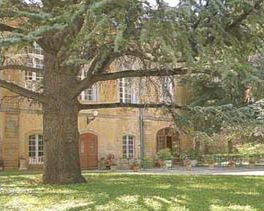
 It
languished for years until, in 1951, the Hostellerie de l'Evêché
was opened in the old Episcopal Palace. The Episcopal apartments had been converted
into hotel rooms rented by the day. A major rehabilitation project was undertaken
in 1953 when the Orangery was torn down - with the exception of the stone framework
and the bottom part of the north wall. In April 1955, the Orangery was re-opened.
The palace has undergone several restorations since, and now has a decent restaurant
featuring regional cuisine. A stone staircase from the old Abbey leads to the
first floor, where visitors can view the old synod room as well as a trompe-l'oeil
library. The building and the grounds, bordering the river Aude, are well worth
visiting. You can eat outside in the summer.
It
languished for years until, in 1951, the Hostellerie de l'Evêché
was opened in the old Episcopal Palace. The Episcopal apartments had been converted
into hotel rooms rented by the day. A major rehabilitation project was undertaken
in 1953 when the Orangery was torn down - with the exception of the stone framework
and the bottom part of the north wall. In April 1955, the Orangery was re-opened.
The palace has undergone several restorations since, and now has a decent restaurant
featuring regional cuisine. A stone staircase from the old Abbey leads to the
first floor, where visitors can view the old synod room as well as a trompe-l'oeil
library. The building and the grounds, bordering the river Aude, are well worth
visiting. You can eat outside in the summer.
Alet Spa
Water

 Natural
springs here were known an ancient times and attracted the Romans - who always
homed in on natural springs in any newly acquired territory. According to local
tradition both Charlemagne and Nostradamus favoured the water here. In 1886 The
French Ministry of Health acknowledged its virtues and granted official authorisation
to bottle it. Water here has been bottled and sold for more than 120 years, putting
it among the oldest brands in France.
Natural
springs here were known an ancient times and attracted the Romans - who always
homed in on natural springs in any newly acquired territory. According to local
tradition both Charlemagne and Nostradamus favoured the water here. In 1886 The
French Ministry of Health acknowledged its virtues and granted official authorisation
to bottle it. Water here has been bottled and sold for more than 120 years, putting
it among the oldest brands in France.
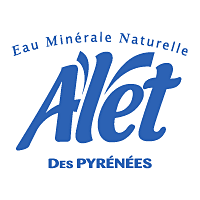
 As
so often in this part of the world the commune has sold the bottling rights, but
locals (and tourists) are still able to fill containers for free from a communal
water spout near to the bottling plant. Other sources in the village are now marked
"non-potable" ("non-drinkable") - which is probably the result
of creeping officialdom rather than any genuine risk.
As
so often in this part of the world the commune has sold the bottling rights, but
locals (and tourists) are still able to fill containers for free from a communal
water spout near to the bottling plant. Other sources in the village are now marked
"non-potable" ("non-drinkable") - which is probably the result
of creeping officialdom rather than any genuine risk.
The spa at Alet Les
Bains is open from the 1st of May to 30th of September from 7am to 1pm, closed
Sunday. There is an outdoor swimming pool and an indoor one both fed by natural
spring water.
Spa waters here are reputed to be good for the treatment of
digestive disorders and metabolic afflictions - obesity, diabetes, gastritis and
colitis. Some say that it was his digestive problems that brought Charlemagne
here.
Contact: Les Thermes d'Alet les Bains, 11580 Alet les Bains
Telephone:
00 33 4 68 69 90 27 - Fax: 00 33 4 68 69 93 4
|
A slow filtration process during the water's subterranean
journey from the mountains to Alet provides trace
elements and mineral salts containing potassium, calcium,
and magnesium. It is claimed that the physicochemical
properties of Alet mineral water come from the Pyrenees.
According to the firm responsible for the bottling
the water, it possesses wondrous properties explained
by its very particular composition of trace elements
and minerals. Its ph is 7.4. It is recommended for
everything and pretty much everyone - including pregnant
women, children, the sick, and top French athletes
in order to enhance their performance. Furthermore,
as their website (http://www.alet.fr/) helpfully points
out, Alet spa water "does not overload your loins
in superfluous elements".
| | Minerality
mg/L
Bicarbonate : 300
Sodium : 13
Calcium : 63
Potassium :
1,8
Chloride : 11
Iron : < 0,02
Magnésium : 23
Nitrate
: 2
Sulphate : 14
Nitrite : < 0,05 |
Further
Information
The Tourist office is adjacent to the abbey ruins.
Abbey
and Cathedral: Click on the following link for more on the
Abbey and Cathedral at Alet-les-Bains 
Guide
vert Michelin Pyrénées page 61
Festival of water sports:
first weekend in June
each year. The water sports festival celebrates these and the village also throws
a repas (public meal which people can buy tickets for), hosts a antique come flea
market and various other attractions.

 The
Casino: In the early twentieth century many spa towns
in the South of France built casinos to entertain their
visitors from the cities. Some of these survive. The original
casino in the town of Alet closed some years ago, but a
new one was built on the outskirts of town just off the
N118.
The
Casino: In the early twentieth century many spa towns
in the South of France built casinos to entertain their
visitors from the cities. Some of these survive. The original
casino in the town of Alet closed some years ago, but a
new one was built on the outskirts of town just off the
N118.
The Casino d'Alet-Les-Bains is located at: Avenue des Pins.
Contact the Casino d'Alet-Les-Bains at +33 4 68 69 91 68.
Neither the modern pink cement building, its flashing blue
neon lights outside, nor its dozens of slot machines inside
do much to enhance the charm of the town, but at least it
is well out of the centre and provides something for the
town's more philistine visitors to do. On the positive side,
it also puts on art exhibitions for the non-Philistines.
Rennes-le-Château:
Alet lies 8 km north from Rennes-le-Château.
Rennes-le-Château:
Alet lies 8 kms south from Limoux.
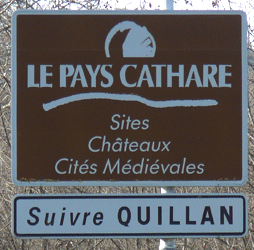
 Le
Hameau de Saint Salvayre (Hamlet of Saint Sylvester)
lies 6 km away, offering a panoramic view of the Pyrenees
and the
Corbières. There of a pretty little chapel dating
from the twelfth century. There is also a prehistoric
standing stone here, referred to as a Druid stone.
Le
Hameau de Saint Salvayre (Hamlet of Saint Sylvester)
lies 6 km away, offering a panoramic view of the Pyrenees
and the
Corbières. There of a pretty little chapel dating
from the twelfth century. There is also a prehistoric
standing stone here, referred to as a Druid stone.
Spa Towns:
Click on the following link for more local spas
Cathar Castles: Nearby are Pieusse
, Puilaurens,
Puivert,
Coustaussa,
Montségur
and Le
Bézu.
More abbeys in the Laguedoc-Roussillon: including
the Abbey
at Saint-Papoul






